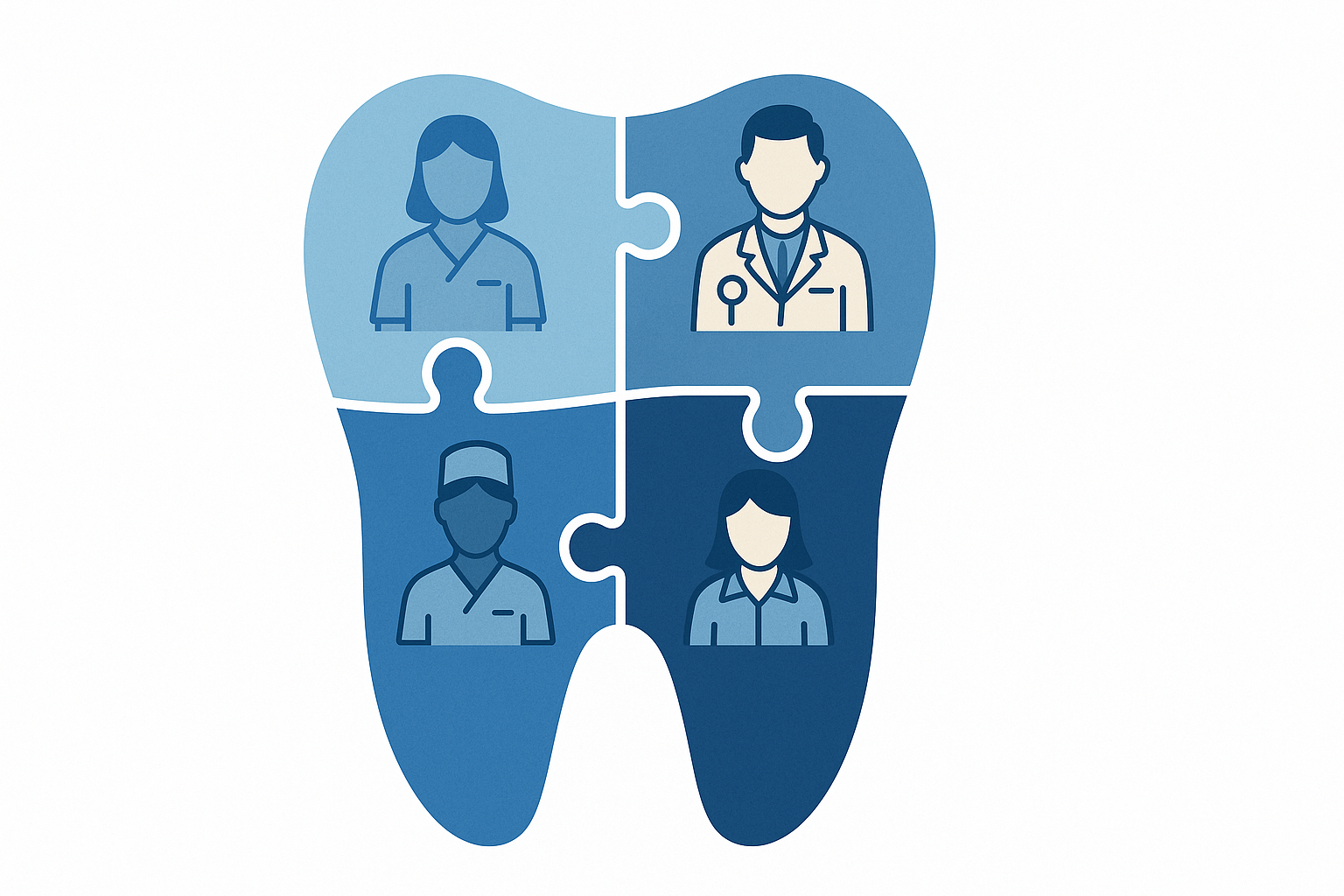By: Melissa Barlock
In the dental chair, trust isn’t just nice to have—it’s everything.
A patient’s willingness to follow through with treatment, share concerns, or even show up consistently often hinges on their level of trust with the provider. While clinical skills are critical, what often makes or breaks the patient experience is how well we communicate and connect. That’s where DiSC comes in.
What is DiSC?
The DiSC model is a simple yet powerful tool that helps us understand behavior and communication styles. It breaks down into four primary types:
- D – Dominance: Direct, decisive, results-oriented
- i – Influence: Social, enthusiastic, people-oriented
- S – Steadiness: Calm, dependable, relationship-focused
- C – Conscientiousness: Analytical, precise, quality-driven
By learning to spot these styles in our patients, we can adapt how we interact—making them feel more understood, respected, and at ease.
Why DiSC Matters in Clinical Settings
Your patients don’t just come in with dental needs—they come with personalities, fears, and communication preferences. When you recognize and respond to those behavioural cues, you create a foundation of trust. Here’s how it works in practice:
🟥 D-Style Patients: “Let’s get to the point.”
These patients are driven, assertive, and want efficiency.
What builds trust:
- Be direct and confident
- Stick to outcomes and benefits
- Offer options, but don’t overwhelm them with details
Example:
“Here’s the best treatment to get you back to 100% quickly. It’s the most efficient approach based on your case.”
🟨 i-Style Patients: “Make it friendly and upbeat.”
i-types are social and people-oriented. They value connection and a positive vibe.
What builds trust:
- Smile and use open body language
- Personalize the conversation (mention hobbies or last visit)
- Explain treatment in an enthusiastic, simplified way
Example:
“I’m excited about the progress we’re making! This next step will have you smiling even more.”
🟩 S-Style Patients: “Go slow and show you care.”
S-styles are steady, loyal, and resistant to change.
What builds trust:
- Use a calm, reassuring tone
- Take your time and explain changes clearly
- Emphasize stability, consistency, and long-term care
Example:
“I know change can feel a bit unsettling, but I’ll walk you through every step so you feel comfortable.”
🟦 C-Style Patients: “Give me the details.”
These patients are logical, detail-focused, and cautious.
What builds trust:
- Be prepared with data or visuals (like x-rays or diagrams)
- Answer questions with precision
- Avoid pushing decisions—give them time to think
Example:
“This chart shows why we recommend this approach. I’ll leave it with you to review, and we can revisit any questions you have.”
The DiSC Advantage: Better Communication = Better Outcomes
When patients feel heard and understood, they’re more likely to:
- Follow treatment recommendations
- Show up consistently
- Refer others
- Leave positive reviews
DiSC doesn’t require you to be someone you’re not—it simply helps you adapt how you present information to match your patient’s comfort zone.
Trust Is Built in the Small Moments
Whether you’re a dentist, hygienist, assistant, or front desk team member, every interaction is a chance to build—or erode—trust. When you understand the DiSC styles, you gain a secret advantage: the ability to meet people where they are.
Because in the end, it’s not just about teeth. It’s about people.
And when people trust you, everything gets easier—for them and for you.
Would you like to bring DiSC training to your practice? Let’s connect—I offer customized workshops for dental teams ready to elevate communication and patient care.
Enspire Dental Opportunities is looking forward to working with you.












